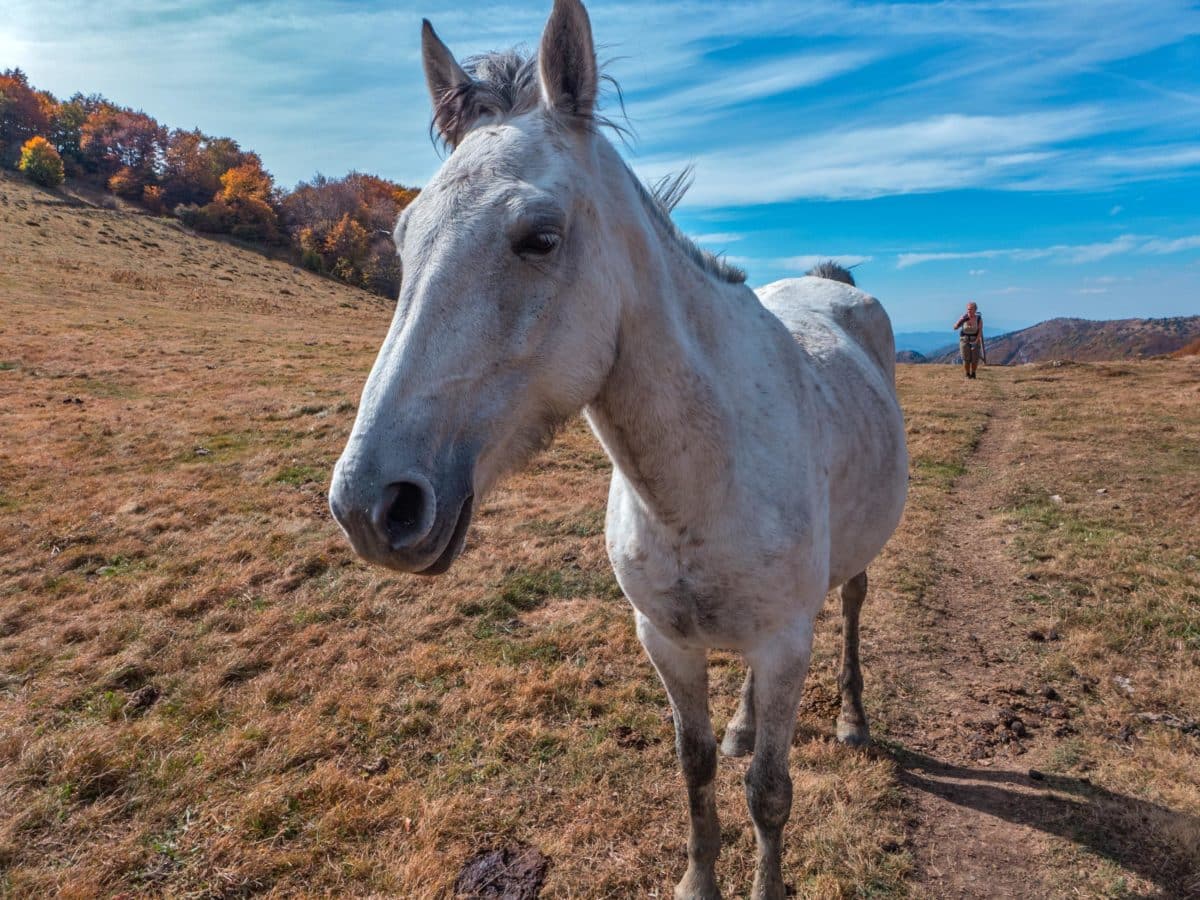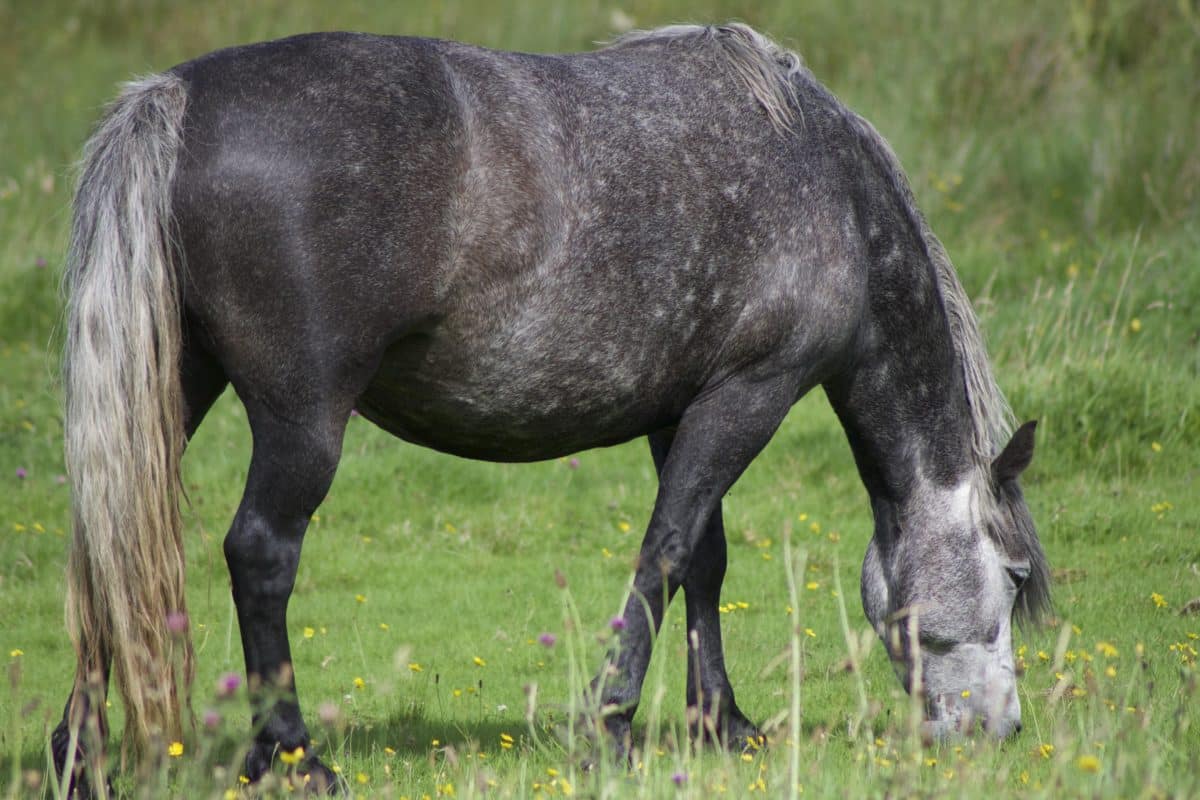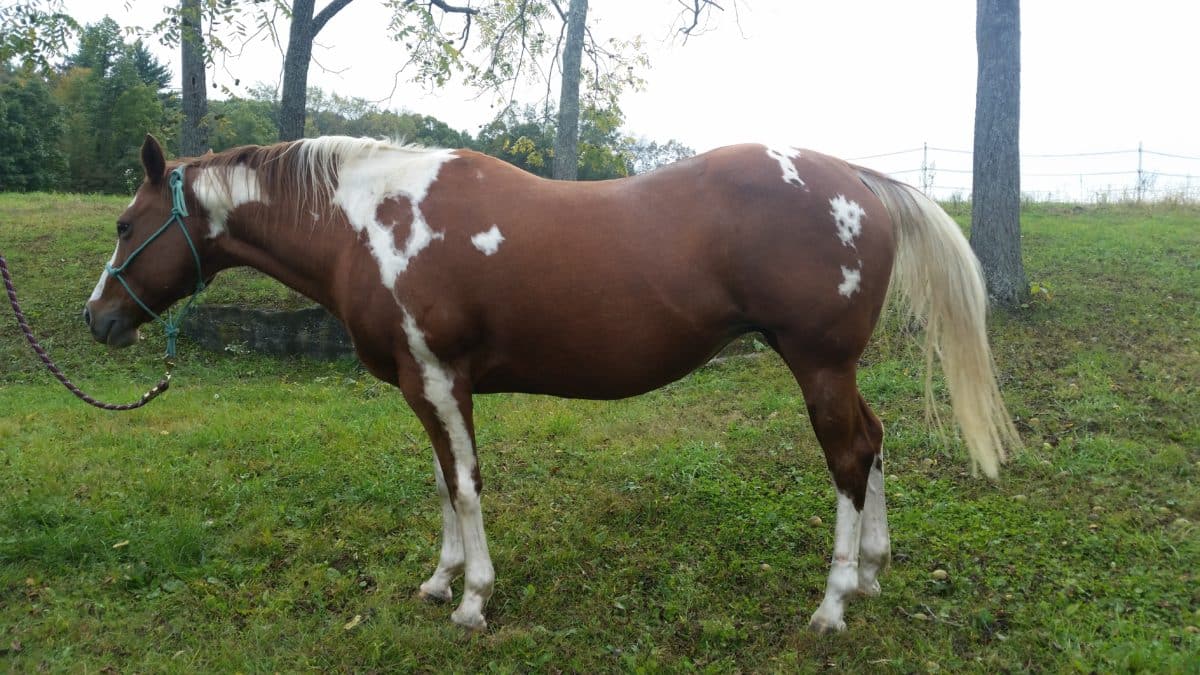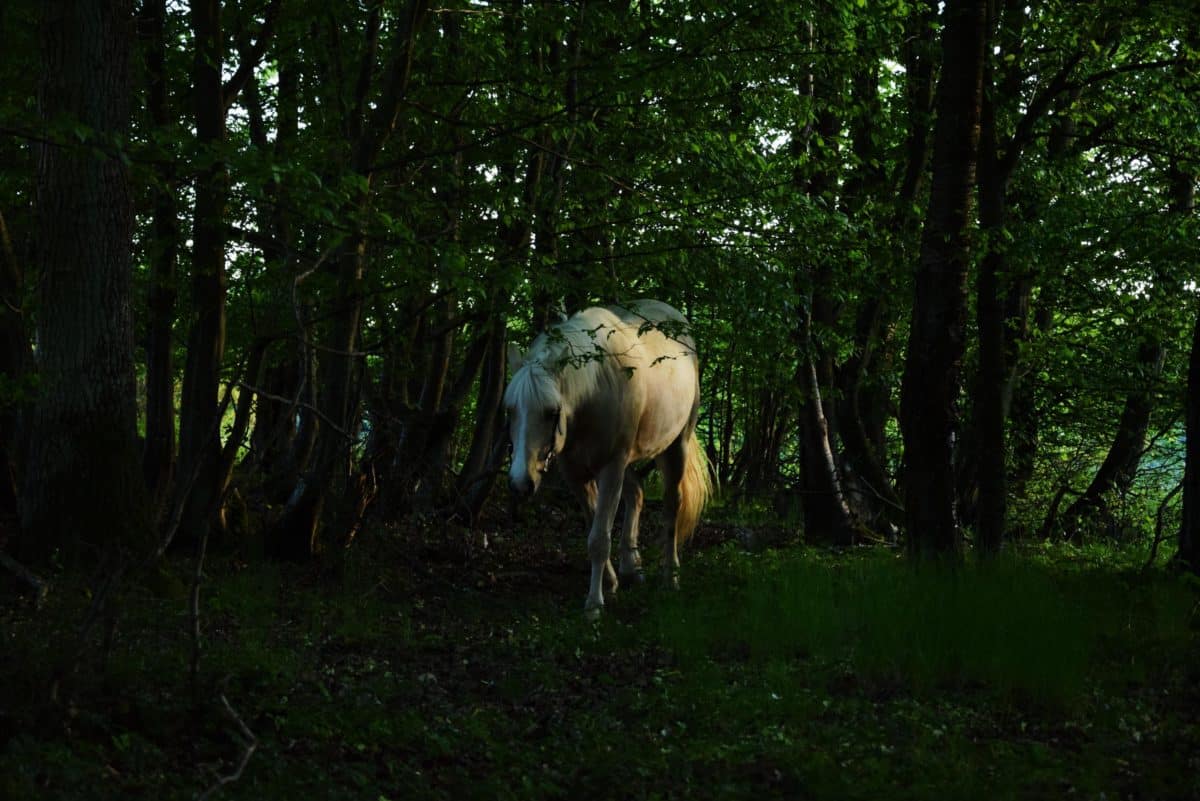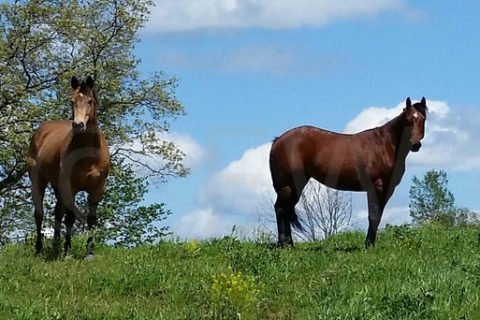
1. Know what you want before you start shopping
This is one of the biggest mistakes I see a lot of buyers make. They have enough money saved up to buy a horse so they dive right in before taking the time to decide what they actually want in a horse.
As a seller, I always ask pre-screening questions to potential buyers and one of the most important ones for me is: “what do you want to do with the horse?” If the potential buyer’s answer is wishy-washy and “oh, I don’t know, I haven’t decided yet,” that is a huge red flag for me.
Now, that is not to say that you have to pick one discipline and stick to it. When I bought Moose, I was looking for a horse with AQHA papers. Technically I was looking for a horse to flip, but I decided to keep her as a show horse (as a replacement for the buckskin) because she was just the right fit.
We still haven’t quite committed to a discipline, but I have a short list we are going to try. She has already proven to be a little ham at the ranch riding clinic we went to and she loves chasing cattle, so I am not worried about our prospects. I have committed to the horse. So, we will try a few disciplines and go with whatever she likes best. If you are willing to commit to the horse and do what is best for the horse, then that is ok too, just know that you are putting your show career at the mercy of the horse’s whims.
2. Set your criteria and stick to your guns
Before you start shopping, make a list of criteria for your new horse and decide which criteria you are willing to negotiate on and which criteria you are not willing to budge on. This is the hard part: stick to your guns. Once you set your criteria, don’t got changing your mind on a whim. If you decide you want a 15hh – 16hh AQHA registered gelding trained and seasoned on barrels, poles, and roping, don’t settle for a 12hh weanling grade filly of questionable parentage and poor conformation. I don’t care how cute she is at the moment, you will regret it quickly and she will have no resale value.
[bctt tweet=”Before you start #horse shopping, make a list of criteria and decide what is negotiable.” username=”EW_Blog” prompt=”share”]
3. Set a realistic budget
If you are looking for a registered, trained, seasoned, proven, horse, don’t set your budget at $500 or even $1,000. The chances of getting what you want on that budget are next to nada. If you do find something in that price range there is probably something very wrong with it.
Yes, I got Moose for $600 off craigslist. But she was a unbroke 6-year-old with hooves that hadn’t been trimmed in 2 years. Her hooves still aren’t fully recovered and she still bucks every time someone new gets on her. After all we’ve been through, I trust her with my life, but I don’t trust her with anyone else’s.
So, if all you have is a $500 budget, you better be ready to put years of training, blood, sweat and tears into making it into the horse you want. And if you don’t have the skills or experience to train a horse, you need to have a budget for a good trainer, but at that point you might be better off-putting that budget into a better trained horse to begin with.
4. Set realistic expectations for the horse
This is especially difficult if it is your first time horse shopping. In this case, sometimes it is easier to have a more experienced friend or mentor to work with to help keep your expectations in check and realistic for you budget. If you set your heart on that 12hh grade weanling filly, don’t get your hopes up that she’s going to make Grand Prix dressage horse or a pro barrel horse. She might end up excelling at local school shows, but don’t get your hopes too high until you see how she grows. Your best bet is to get a horse who is bred for what you want.
Even with Moose, the cards are stacked more in my favor because I know her bloodlines and she is bred for what I want. Given her history and her handicap, it is still a gamble, but it is less of a gamble than if she were a grade nobody.
5. Have the seller demonstrate the horse first
This is a big one. I’m am a resolute cynic when it comes to horse shopping. If I don’t see the seller demonstrate what the horse is supposed to be able to do, then I assume the horse can’t actually do it. Never take the buyer’s word for anything. If they say the horse can be tied to a high line over night, I expect a picture or video of the horse on a high line. If they say the horse can lunge calmly, I expect a picture or video of the horse lunging calmly.
As a seller, I make sure any claims I make about the horse can be backed up by photo or video evidence as well as in-person demonstration. I always demonstrate everything before offering to let the potential buyer try it.
If the seller tries the excuse of “it’s too muddy/rainy/bad footing” or whatever, offer to come back another day. If they balk, walk away.
6. Be willing to walk away
Walk-away power is key. Even if you are absolutely sure you want this horse and you’ve brought cash and your trailer, you need to make it clear that you are still willing to walk away empty-handed. It is amazing how quickly buyers fess up to any false advertising once they see a wad of cash about to walk out the door.
7. Get a vet check
As a farrier myself, I do my own preliminary vet check having the buyer walk and trot the horse towards and away from me on an even surface. I check legs, teeth, heart rate, and breathing. If the horse passes basic inspection and all groundwork and under saddle tests, then I recommend calling in a vet for a vet check.
This is not just for the vet check though. This is another test of the seller’s honesty. If the seller starts getting nervous or outright refuses a vet check, I would walk away. This is another trick to shopping, always being on your toes and watching for any sign of dishonesty in the seller. I would also ask the vet to draw blood for a drug screen in front of the seller. Again, check the seller’s reaction and take note if the seller starts making excuses for anything that may show up.
I wouldn’t necessarily have the vet run the drug screen though unless you have your heart set on the horse but are really suspicious something might be wrong. In that case I would make the sale contingent on a clean drug screen. Most vets will be fine holding the sample for you so you have legal recourse if something comes up later.
8. Follow your gut
If your instincts tell you something is wrong, walk away. It is not worth the risk. When there are horses involved, there is too much money and even your life at stake if something goes wrong. There have been times when I had a gut feeling about a horse that I ignored and I nearly paid for it with my life. Needless to say, I hope I won’t let myself make that mistake again. Whether your gut is telling you something about the horse or the buyer, it is better to be safe than sorry. If you walk away on a gut feeling you may never know if you were right or not, but that is better than ignoring your gut and getting hurt.
9. Take your time while shopping
Don’t be in a rush and make a snap decision that you will regret. Take your time and stick to your guns. It will be worth it in the end. According to the American Horse Council Foundation there are at least 9.2 million horses in the United States. I promise, your dream horse is out there somewhere. It might take a while to sort through them all, but he or she is out there somewhere if you have the patience to find them.
10. Don’t do your shopping sight unseen
The goes right back to never taking the seller’s word for anything. When you are looking at a video from 3,000 miles away, it is pretty darn easy to make most horses look like a decent show prospect. Video editing and Photoshop are a seller’s best friend and a buyer’s worst nightmare.
Now, if you have experience, the seller has a good reputation, and you go into it with your eyes wide open understanding the risks, then you might be able to get away with it. But I don’t recommend it unless the seller is a reputable breeder or trainer and you or someone you trust has dealt with them before. Even so, I don’t recommend it.






